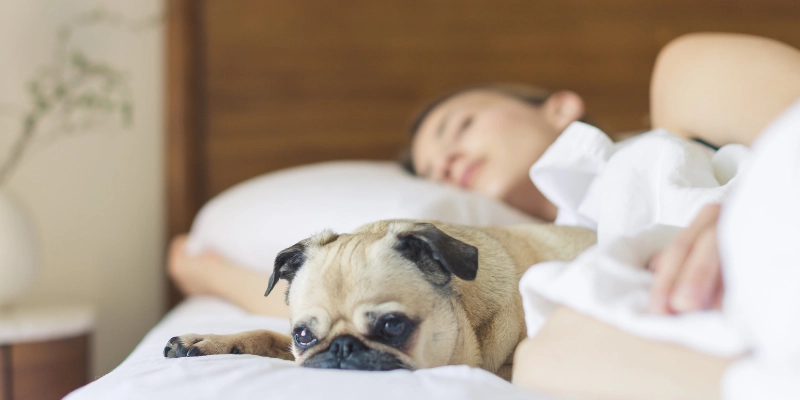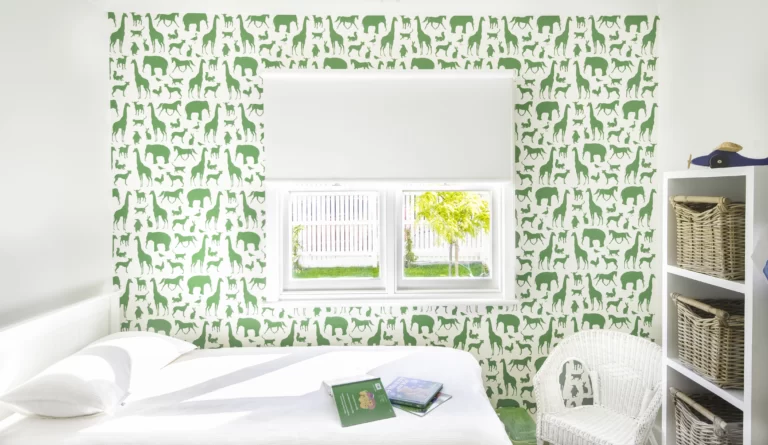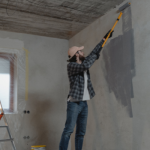Are you considering sleeping in a freshly painted room? Think twice! Because paint fumes from the paint can pose a risk to your health and well-being! In this post, we’ll explore the dangers of sleeping in a newly painted room and provide helpful tips to ensure a safe environment for you and your loved ones.
Short Article Summary
- The article will point out how volatile organic compounds (VOCs) from fresh paint can lead to various health risks.
- Information on low or zero-VOC paints and how increased ventilation are essential to reduce exposure to harmful fumes.
- Why waiting at least, a week before occupying a freshly painted room can protect your health.
Possible Paint Fumes Nervous System Complications
Exposure to solvent fumes can lead to a variety of nervous system complications. When inhaled, the toxic chemicals in paint can affect the central nervous system, causing dizziness, memory loss, and impairment of coordination. These symptoms can be short-lived or, in some cases, lead to more serious long-term complications2.
Understanding the Risks of Sleeping in a Freshly Painted Room
Sleeping in a freshly painted room can expose you to VOCs. These chemicals evaporate from wet paint and turn into harmful gases. VOCs cause various health problems, from mild irritation to severe organ damage. Although modern paints are low VOC, the risk is still present, especially for vulnerable groups such as pregnant women, young children, and pets1. So, inform yourself by reading the following sections that delve deeper into these potential health hazards and discuss the necessary precautions to stay safe.
Organ Damage and Respiratory Issues
VOCs from paint can harm the functioning of specific organs, including the liver, kidneys, as well as breathing difficulties, eye, nose, and throat irritation, coughing, and asthma attacks. Individuals with anemia and asthma are particularly vulnerable to respiratory problems caused by inhaling paint fumes3.
Moreover, prolonged exposure to VOCs has been linked to various forms of cancer, making it even more crucial to minimise exposure to paint fumes. To reduce the risk of allergic reactions and cancer, choose paints with low or zero VOC content and ensure proper ventilation during and after painting3.
To avoid these health risks, it is crucial to select paints with low or zero VOC content and ensure proper ventilation during and after painting. Taking these precautions will help reduce the concentration of VOCs in the air and lower the potential for organ damage and respiratory issues4.


Necessary Precautions for Vulnerable People and Pets:
– Pregnant Women and Freshly Painted Rooms
After applying oil-based paints, pregnant women should be particularly cautious when sleeping in freshly painted rooms. High levels of VOCs can cause developmental anomalies in unborn babies and increase the likelihood of childhood leukemia. As suggested by empiricalmamma5, to provide a safe environment for everyone, especially vulnerable groups such as pregnant women, young children, and pets, it is crucial to wait for at least one to two weeks before sleeping in a freshly painted room and ensure proper ventilation during this time.
– Children and Freshly Painted Rooms
Children are also vulnerable to the potential health risks of sleeping in a freshly painted room. Waiting at least a week before allowing a child to sleep in a room with newly applied paint is recommended due to potential allergic symptoms6,9.
To ensure proper ventilation for children, keep windows open and use exhaust fans to promote air circulation in the freshly painted room. These precautions can create a safer environment for your child and reduce exposure to harmful paint fumes7.
– Pets and Freshly Painted Rooms
Like their human companions, pets should not sleep in freshly painted rooms due to their smaller lung capacity. In addition, exposure to paint fumes can lead to respiratory difficulties in pets8.
Three Steps to Lower the Risk of Paint Fumes
1. The One-Week Rule
According to Schieweck and Bock9, the 72-hour rule is a guideline that may not be the best recommendation as even low VOC paint may emit fumes after a day and a half. Therefore, their study implies waiting at least a week before occupying a space that has been freshly painted. This allows the paint to dry completely and the volatile organic compounds to dissipate. Adhering to this rule can reduce exposure to harmful paint chemicals and protect your health.
2. Low or Zero VOC Paint Options
Low or zero-VOC paint options can reduce the number of VOCs in the air, making them a safer choice for your home. In addition, these paints emit fewer toxic chemicals. They are virtually odourless, allowing you to paint a bedroom in one day and still sleep in it the same night9.
3. Tips for Ventilating a Freshly Painted Room
Increasing ventilation during and after painting can significantly improve indoor air quality and reduce the concentration of VOCs. Open windows, use box fans, air purifiers, and dehumidifiers to promote air circulation and optimise indoor air quality7. Ventilate the freshly painted room for approximately one to two weeks to ensure that paint fumes dissipate entirely9.
In conclusion, reducing paint fumes requires a combination of prevention and proactive steps to reduce VOCs. You can lower the potential risks of sleeping in a freshly painted room by selecting indoor paints with low VOC content and enhancing ventilation during as well as after painting.
Frequently Asked Questions
Is it OK to sleep in a freshly painted room?
The answer to this question is “No.” Sleeping in a freshly painted room can be hazardous as toxins are released from the paint.
Can I prevent getting harmed by paint fumes?
“Yes!” To remain safe, ventilate the room and wait at least one to two weeks before sleeping.
Is it OK to sleep in a freshly painted room while pregnant?
In general, sleeping in a freshly painted room while pregnant is not recommended due to the potential health risks posed by solvents and other chemicals in paint. To avoid potential risks, wait at least one to two weeks after a surface has dried before sleeping in a freshly painted room.
NOTE – this article contains information and references found online. This article is not medical advice. If you have any concerns, please visit your GP or call the Poisons Information Centre on 131 126
References
(1) Volatile Organic Compounds’ Impact on Indoor Air Quality | US EPA. (2022, August 26). US EPA. https://www.epa.gov/indoor-air-quality-iaq/volatile-organic-compounds-impact-indoor-air-quality
(2) Dick, F. (2006). Solvent neurotoxicity. Occupational and Environmental Medicine, 63(3), 221–226. https://doi.org/10.1136/oem.2005.022400
(3) Tanzer-Gruener, R., Rajan, P. E., Dugan, L., Bier, M. E., Robinson, A. L., & Presto, A. A. (2022). Watching Paint Dry: Organic Vapor Emissions from Architectural Coatings and their Impact on Secondary Organic Aerosol Formation. Environmental Science & Technology, 56(16), 11236–11245. https://doi.org/10.1021/acs.est.2c02478
(4) Hasan, N. H., Said, & Leman, A. M. (2013). Health effect from volatile organic compounds and useful tools for future prevention: A review. ResearchGate.
(5) MSc, P. P. (2022, March 16). Is it Safe to Sleep in a freshly Painted Room when Pregnant? empirical mama. empirical mama. https://empiricalmama.com/safe-to-sleep-in-a-freshly-painted-room-when-pregnant/
(6) Rumchev, K., Spickett, J., Bulsara, M., Phillips, M. M., & Stick, S. M. (2004). Association of domestic exposure to volatile organic compounds with asthma in young children. Thorax, 59(9), 746–751. https://doi.org/10.1136/thx.2003.013680
(7) Indoor air quality | YourHome. (n.d.). https://www.yourhome.gov.au/live-adapt/indoor-air-quality
(8) Pal, V. K., & Kannan, K. (2023). Assessment of exposure to volatile organic compounds through urinary concentrations of their metabolites in pet dogs and cats from the United States. Environmental pollution (Barking, Essex : 1987), 316(Pt 2), 120576. https://doi.org/10.1016/j.envpol.2022.120576
(9) Schieweck, A., & Bock, M. (2015). Emissions from low-VOC and zero-VOC paints – Valuable alternatives to conventional formulations also for use in sensitive environments? Building and Environment, 85, 243–252. https://doi.org/10.1016/j.buildenv.2014.12.001







